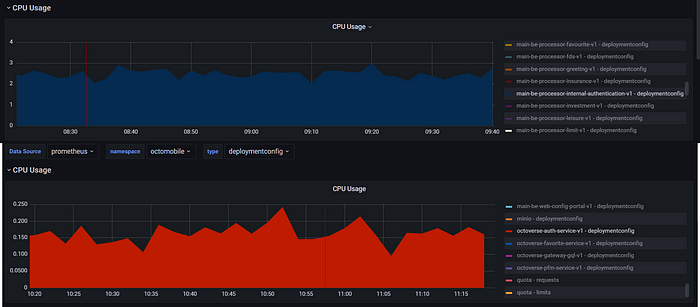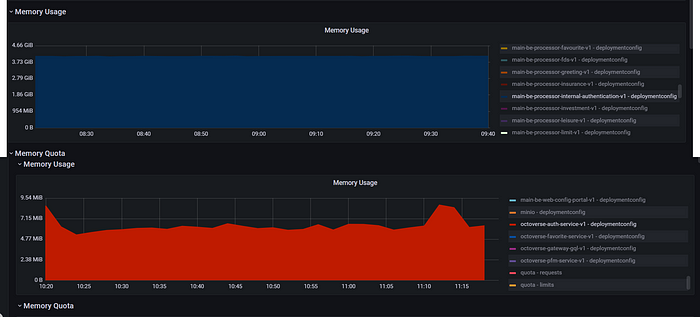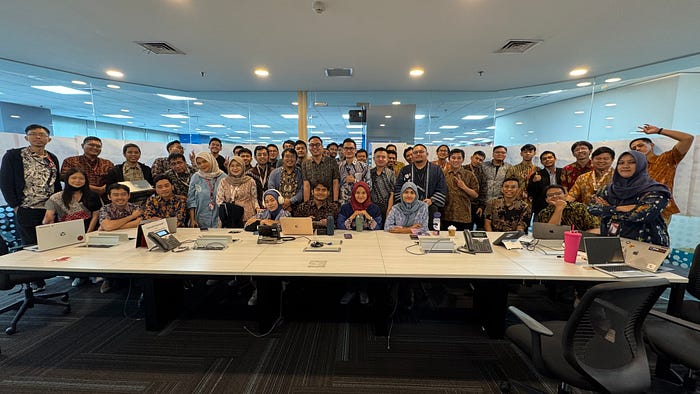
God. I still remember the day our CTO walked into our team room with that look on his face. You know the one – half excitement, half "I'm about to ruin someone's weekend." He dropped the bomb that we needed to seriously overhaul our backend systems at CIMB Niaga because customers were getting ticked off during payday rushes. The system was choking like me trying to run a 5K after a year of pandemic snacking.
This isn't just another tech migration story. This is about how our team basically performed open-heart surgery on our banking platform while keeping it alive and kicking. And yeah, we survived to tell the tale.
When Your Java Code Starts Sending Distress Signals
Let's be brutally honest here. Our Java microservices were struggling. Not like "needs-a-coffee" struggling, but full-on "gasping-for-air" struggling. Every payday, when half of Indonesia decided to check their balances simultaneously, our servers would start sweating. Latency issues. Memory bloat. The works.
I remember sitting in a war room at 11PM on a Friday, watching our metrics dashboard turn an alarming shade of red while frantically ordering my third coffee. One of our senior devs actually texted his wife: "Don't wait up. Java's having a meltdown again."

We had to fix this mess.
The Great Language Debate (Or How I Lost $20)
So there we were, a room full of caffeine-addled engineers debating our next move. Go vs Rust. The eternal question of our generation. I bet our architect $20 that we'd end up with Go – it's friendly, approachable, has that nice garbage collection that makes life easy.
I lost that bet. Hard.
After weeks of testing, benchmarking, and occasionally yelling at whiteboards, Rust emerged as our champion. Not because it was trendy (though let's be real, that didn't hurt), but because our banking customers deserve better than periodic garbage collection pauses when they're trying to pay their bills.

Why We Fell for Rust (Despite Its Cruel Learning Curve)
Memory safety was the big selling point. No more NullPointerExceptions lurking in the shadows, waiting to ruin someone's transaction at 2AM. Rust catches that nonsense at compile time, which meant fewer midnight pages for our on-call engineers.
But the performance? That's what sealed the deal. In 2023, we clocked our Java authentication service taking a leisurely 31.9 seconds to start up. The Rust version? Under ONE second. I'm not even exaggerating – we're talking 31x faster. One of our juniors literally applauded when we saw the numbers.
And teh resource usage improvements made our infrastructure team dance. We went from 3 cores and 3.8GB of memory with Java to 0.25 cores and just 8MB with Rust. That's 486 times more memory efficient! Our CFO almost smiled when we showed him the potential cost savings.
Teaching Old Dogs New Tricks (And Surviving)
Look, I won't sugarcoat it. Learning Rust was PAINFUL. The borrow checker made several of us question our career choices. We had a "Rust Rage" jar in the office where you had to put in 5000 rupiah every time you cursed at the compiler. We bought a nice coffee machine with that money three weeks later.

Our team lead set up these knowledge-sharing sessions that started as tutorials and evolved into group therapy. "Hi, I'm Budi, and it's been two days since my last lifetime error." The solidarity was real.
But we got through it together. The senior devs mentored the juniors. The juniors found Stack Overflow posts that the seniors were too proud to search for. It worked.
Zero Customer Drama (The Miracle)
The scariest part? Deploying this thing without customers noticing. Banking customers don't exactly send thank-you notes when things work properly – they only reach out when something breaks.
We ran both systems in parallel for a while, carefully routing traffic and monitoring everything. I barely slept that month. My partner started leaving food outside my home office door like I was some sort of hibernating bear.

But it worked. Not a single customer complaint during the transition. In fact, we started seeing positive comments about how OCTO Mobile felt "snappier" – the ultimate compliment in the digital banking world.
What's Next? (Besides More Coffee)
We're not stopping here. The success of this migration has given our team a taste for more improvements. We've got plans to expand our Rust ecosystem further into our platform.
And honestly? I'm excited. Despite the learning curve, despite the late nights, there's something incredibly satisfying about building systems that just... work. Systems that our customers can rely on when they need to send money to their kids at university or pay for emergency medical bills at 3AM.
That's what keeps us going. Well, that adn the ridiculous amounts of coffee.

Want to Join Our Slightly Chaotic but Well-Intentioned Team?
By the way, we're looking for interns! If you're a student who doesn't mind the occasional existential crisis brought on by compiler errors, we have a 1-year internship program that might be perfect for you.
You'll work directly with our Solution Architects – the same folks who somehow convinced management that rewriting our core services in Rust was a good idea (and then proved it was).
Fair warning though: you'll actually be doing real work. This isn't one of those internships where you fetch coffee and pretend to understand what's happening in meetings. You'll be writing code that millions of banking customers depend on. No pressure!
A massive thanks to our leadership team – Pak Jeff, Pak Bob, and Bu Lusi – for backing us even when we came to them with what must have sounded like a crazy plan. Your trust means everything.
Always check our latest articles at...
https://banksandfinance.com/banking
 BankingFinanceCryptoMortgagesRetirement PlanningEstate PlanningCredit CardsCredit RepairPrivacy PolicyTerms And Conditions
BankingFinanceCryptoMortgagesRetirement PlanningEstate PlanningCredit CardsCredit RepairPrivacy PolicyTerms And Conditions
